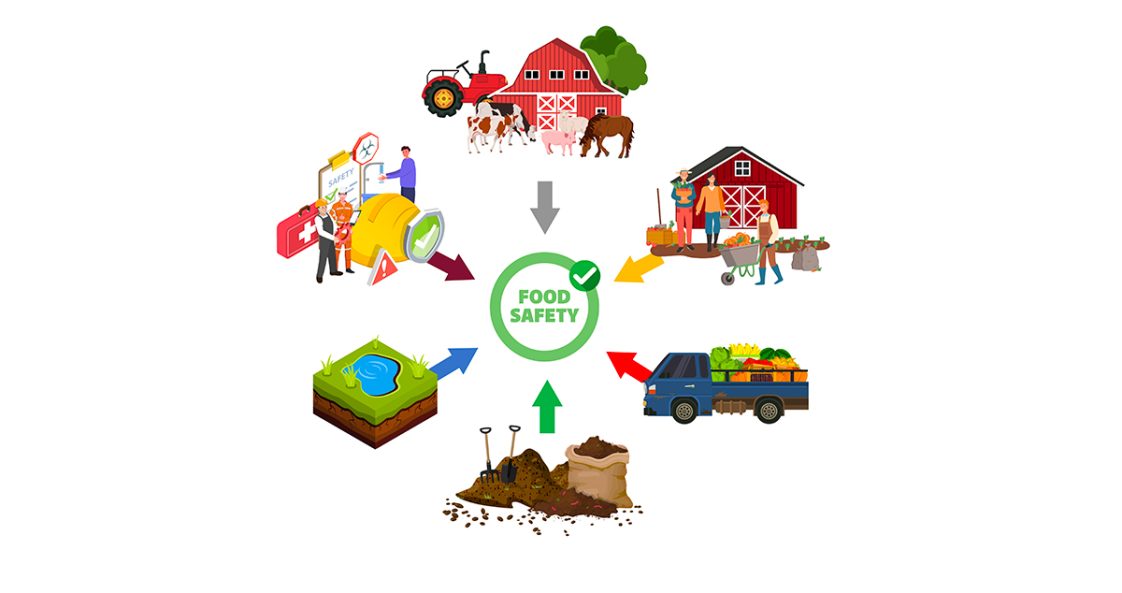Food Safety

Good Agricultural Practices (GAPs) during preharvest, harvest, and postharvest of produce.
Food Safety
Worker Health & Hygiene
- Have a designated break area with equipped restrooms for workers.
- Provide food safety training to harvest crew and workers.
- Keep records of preharvest, harvest, and postharvest activities (microbial water testing results, training certificates for workers).
- Take corrective measures when necessary.
- Have a designated person to manage food safety practices on the farm.
- Implement a handwashing station with liquid soap, disposable paper towels, and clean water near work areas.
- Implement a policy for reporting illness or injury among workers.
Facilities & Equipment
- Clean and sanitize harvest tools, bins, packing line, equipment, and facility.
- Regularly inspect and maintain equipment to ensure proper functioning.
- Implement a cleaning schedule for all equipment and facilities.
- Provide adequate storage space for tools and equipment to prevent contamination.
Storage & Transport
- Transport fresh produce in clean bins and trucks and under proper temperature.
- Store fresh produce in clean areas and under proper temperature.
- Implement a first in, first out (FIFO) system for harvested produce storage.
- Monitor temperature and humidity levels in storage areas to prevent spoilage.
- Regularly inspect storage containers for damage or contamination.
- Regularly clean and sanitize transport containers and vehicles after each use.
Land & Water
- Monitor microbial quality of water used in the field (water testing).
- Keep animals away from produce fields (domesticated, wild, and livestock).
- Balance conservation practices with farm food safety (keep buffer strips around water sources).
- Monitor microbial quality of water used during harvest and post-harvest activities.
- Be aware of adjacent land use and high-risk areas.
- Use Environmental Protection Agency (EPA) approved sanitizer in wash water to prevent cross-contamination.
- Monitor sanitizer levels in the wash tank (if using).
Manure & Soil
- Compost animal manure.
- Keep manure storage areas away from produce fields to minimize contamination risks.
Find more information on the Alabama Extension website at www.aces.edu:
- AgWater Safety Program (FREE microbial water testing)
- Step-by-Step Guide to Small Farm Irrigation
- Food Safety Certification for Specialty Crops Program Helps Offset Costs for Growers
- Food Safety for Southern US Food Crop Producers After Flooding
Camila Rodrigues, Extension Specialist, Assistant Professor, Horticulture, and Bridgette Brannon, Regional Extension Agent, Food Safety and Quality, both with Auburn University.
New March 2024, Food Safety for Produce Farmers, ANR-3054

